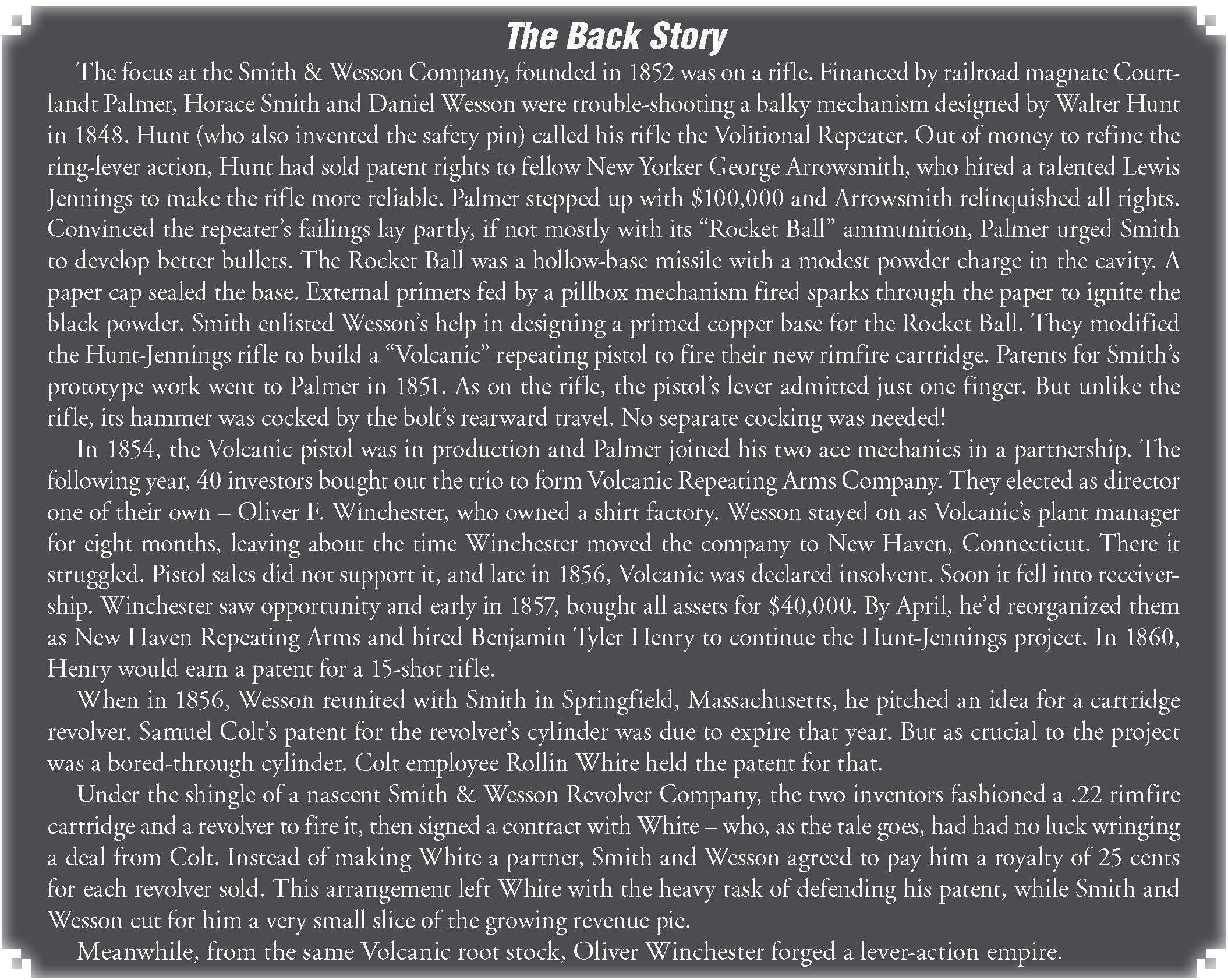Smith & Wesson Model 1854
Back to Root Stock
feature By: Wayne van Zwoll | September, 24
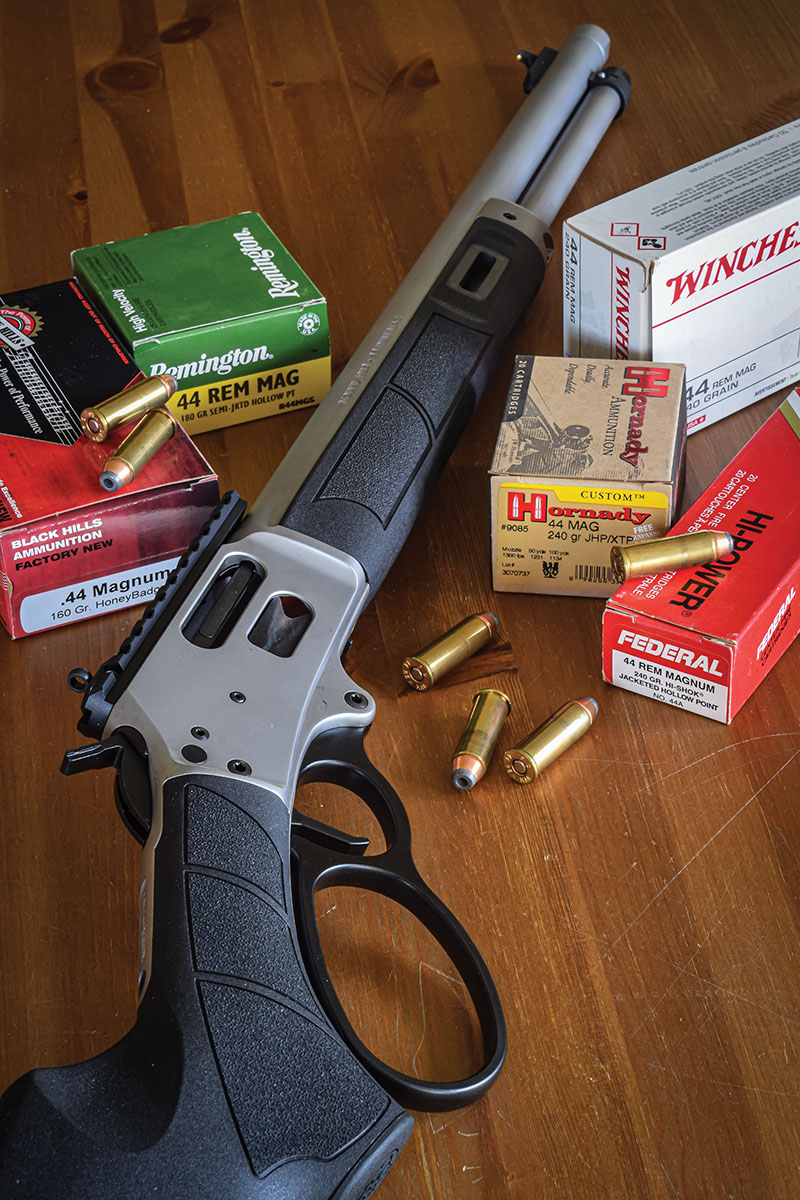

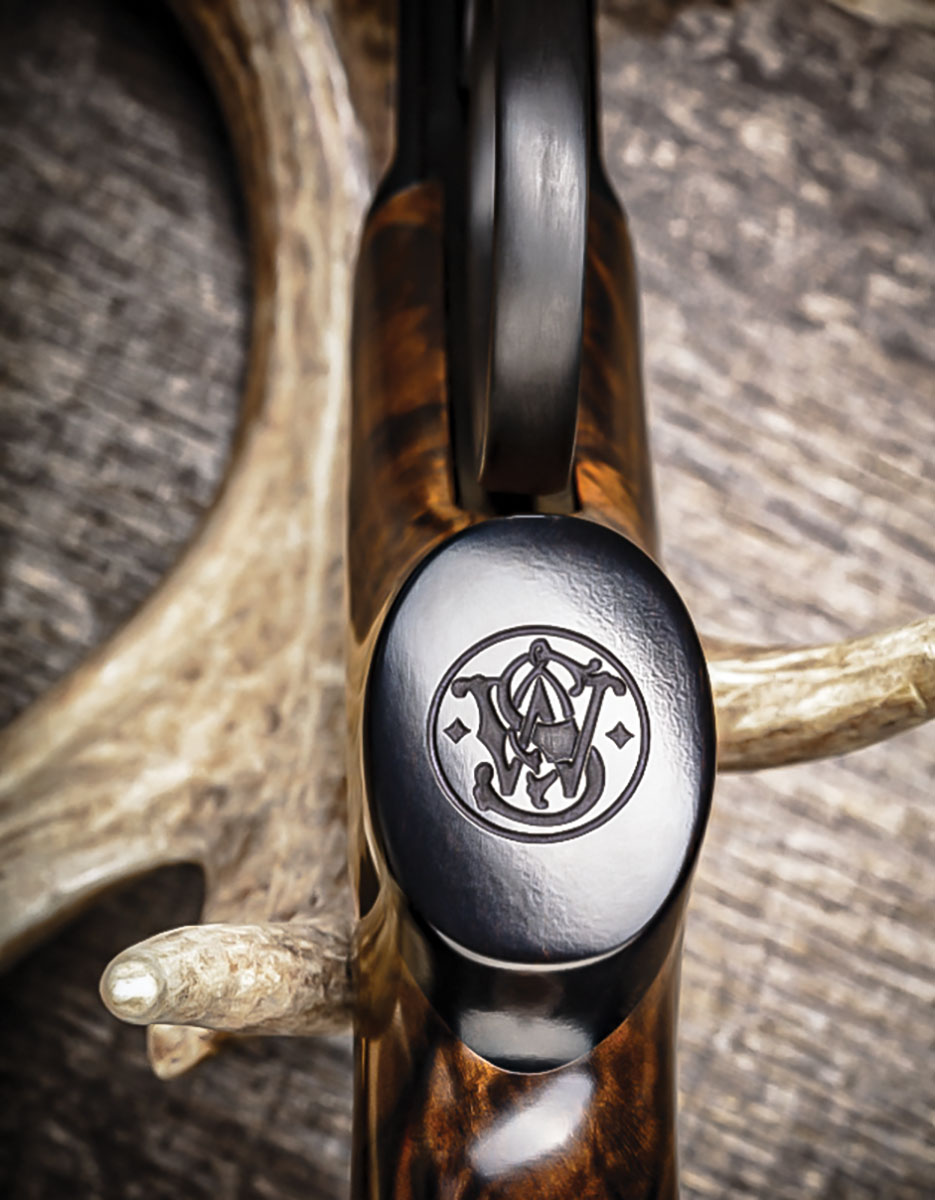
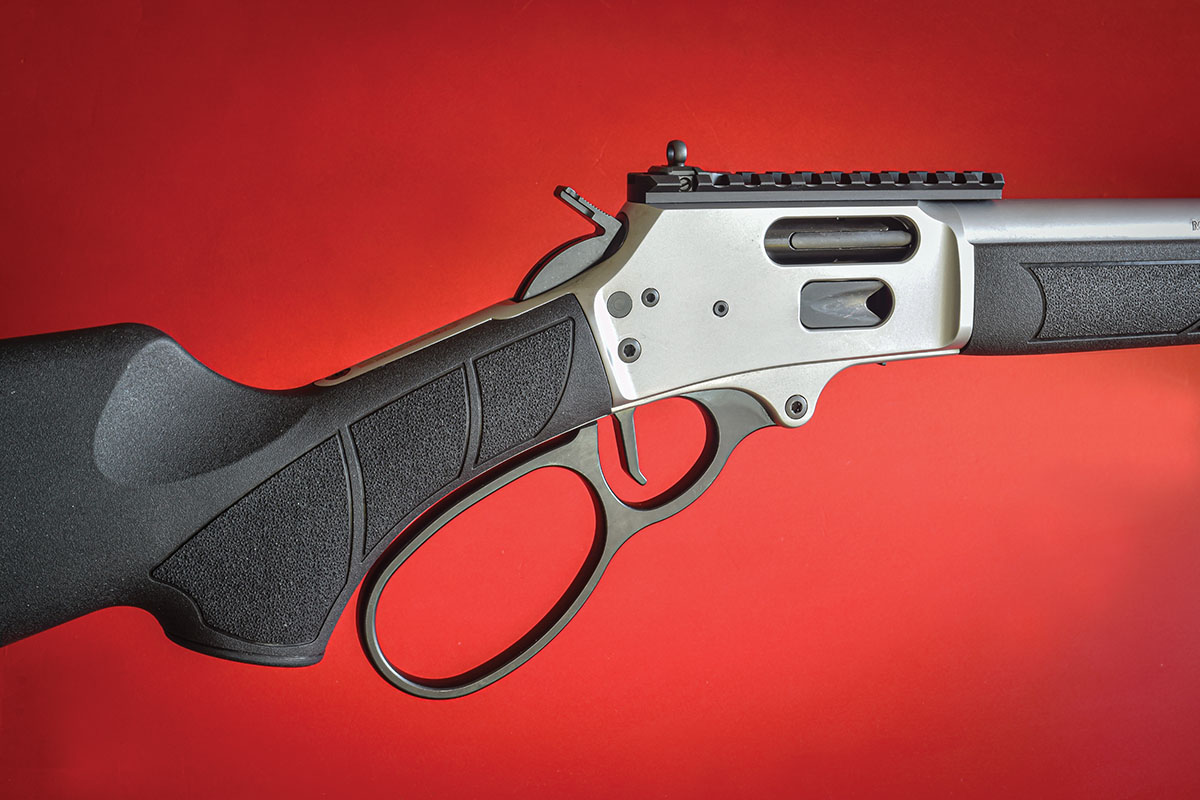
A thriving market in accessories has followed. Skinner apertures and front sights hew to tradition while helping hunters shoot accurately, “period” metallic sights that serve competitors in Cowboy Silhouette matches. Galco’s leather Butt Cuff with cartridge loops is dressy and useful. The tactical fraternity warms to lever guns festooned with rails, brakes, adjustable cheekpieces, red dot and fiber-optic sights and alloy AR-style handguards with M-LOK slots.
Design by Demand
“The success of other lever-actions at market influenced our decision to introduce one,” said Vince Perreault, S&W’s director of brand marketing. “But we didn’t copy a specific rifle. After consulting customers and collectors, our engineers started from scratch to build a smooth-shucking rifle with the appeal of S&W’s DA revolvers.”
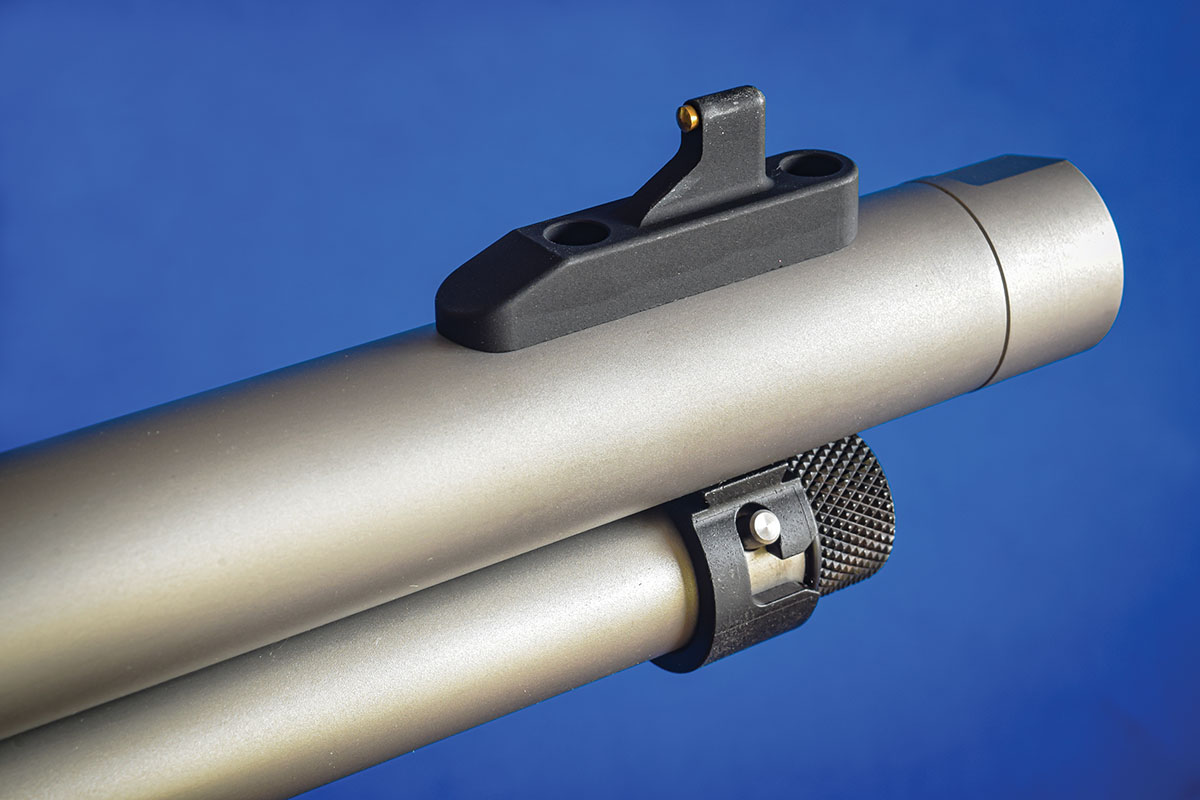
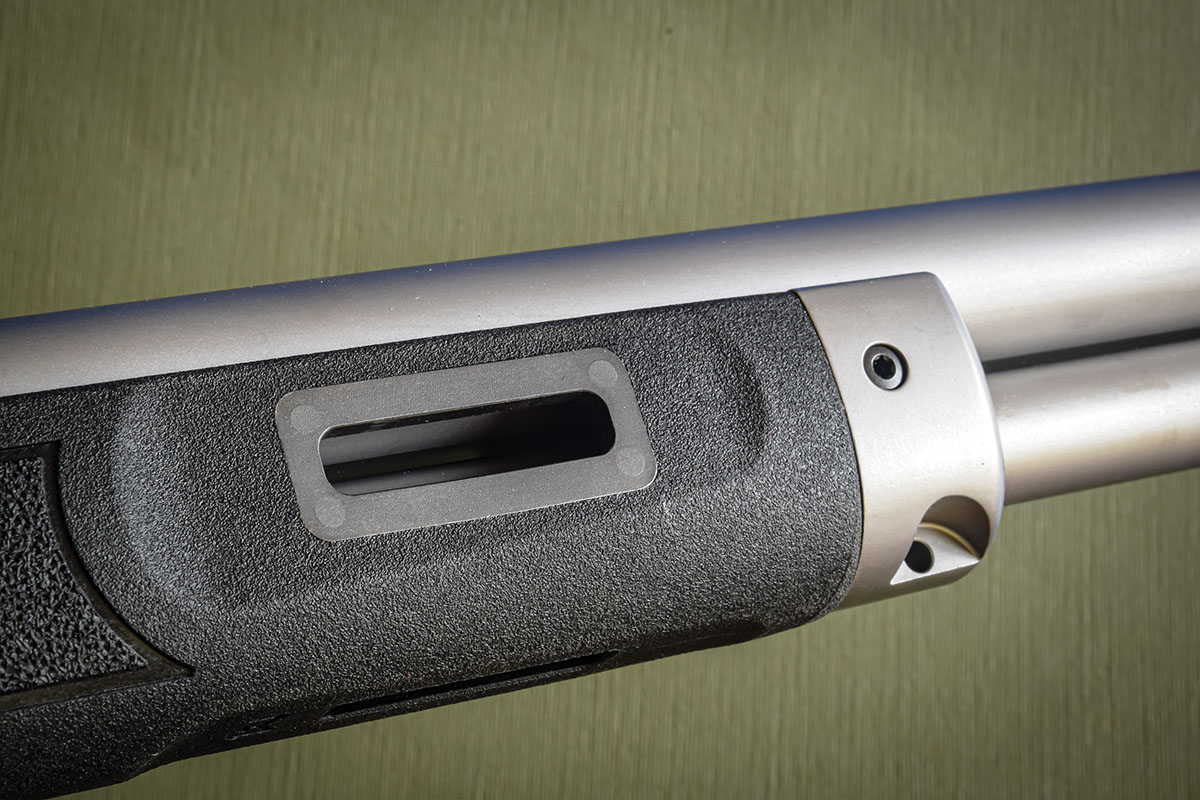
The 1854’s slender barrel has eight-groove rifling, with the 44’s standard twist rate of one turn in 20 inches. The muzzle is threaded 11⁄16x24. “Not traditional,” admitted Dubuc. “But we couldn’t ignore the trend to suppressors.”
S&W makes the Model 1854 in two mechanically identical versions. Both have forged receivers of 416 stainless steel, drilled and tapped for 8-40 screws. Barrels are produced in-house of 410 stainless steel. The first of these carbines at retail is the stainless-synthetic version. Its bare metal is well polished but not glossy. Steel on walnut-stocked 1854s will have a black PVD finish.
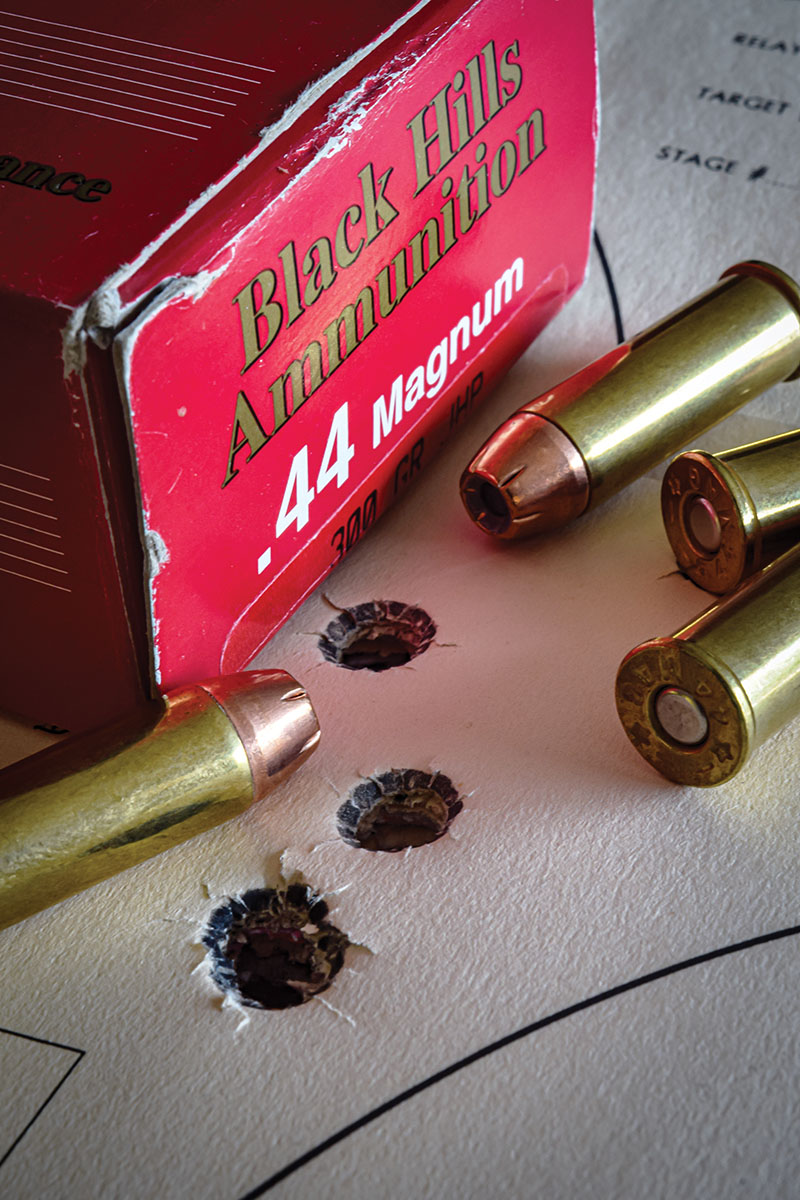
The carbine’s magazine is a full-length, nine-shot tube, banded up front. It is easily removed with a twist of its knurled end, as on tube-fed 22 rifles. But there’s no tube loading port; the entire tube comes free, sliding out through the front barrel band. When I tried dropping a few cartridges into the opening, the inner tube refused to slide back home. Still, removing it is helpful for unloading. The receiver’s loading gate is easy on the thumb – just insert a cartridge to the first “hitch,” then load the next with the gate still ajar.
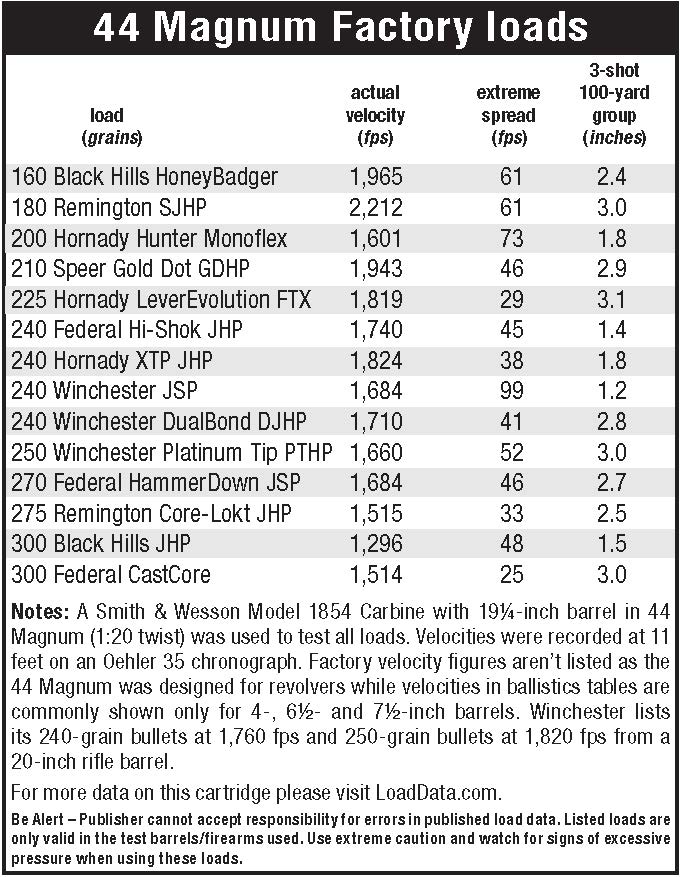
The polymer forestock has three M-LOK slots, one each on the sides and belly. A steel forend cap has an integral sling swivel stud snug in its face. The buttstock wears a standard QD stud. The soft ¾-inch recoil pad that takes the sting from heavy loads also keeps the carbine from slipping on the shoulder or when it’s set on a slick log. S&W makes the pad for the synthetic stock. The walnut stock comes from its supplier with the specified pad final-sanded with the wood.
I’m delighted by the shape of the buttstock. Its comb is straight, nose to heel and nicely rounded on top. It’s of proper height for natural aim with the rifle’s XS sights. The grip is long enough and the comb is far enough back that the heel of my hand doesn’t battle with the comb nose. Generous fluting, deep and cleanly cut and finished, helps there too. The grip’s gentle curve comes easily to the hand and puts my trigger finger right where I want it. Grip width, depth and taper seem perfect! The slim forend has a slight bulge to enhance control. Generous stippling at grip and forend is well executed and just aggressive enough to improve grip in rain or snow. “Handgunners like it on S&W revolvers,” said Dubuc.
Trivia That Matters
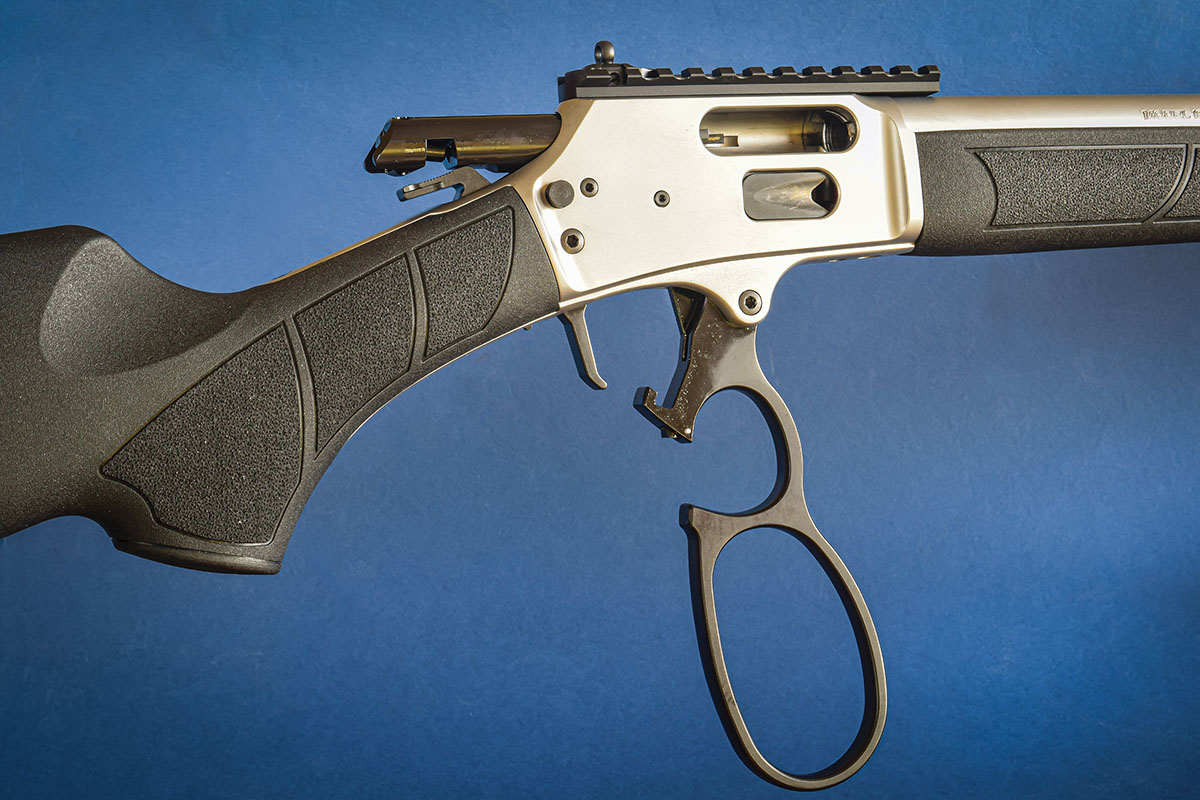
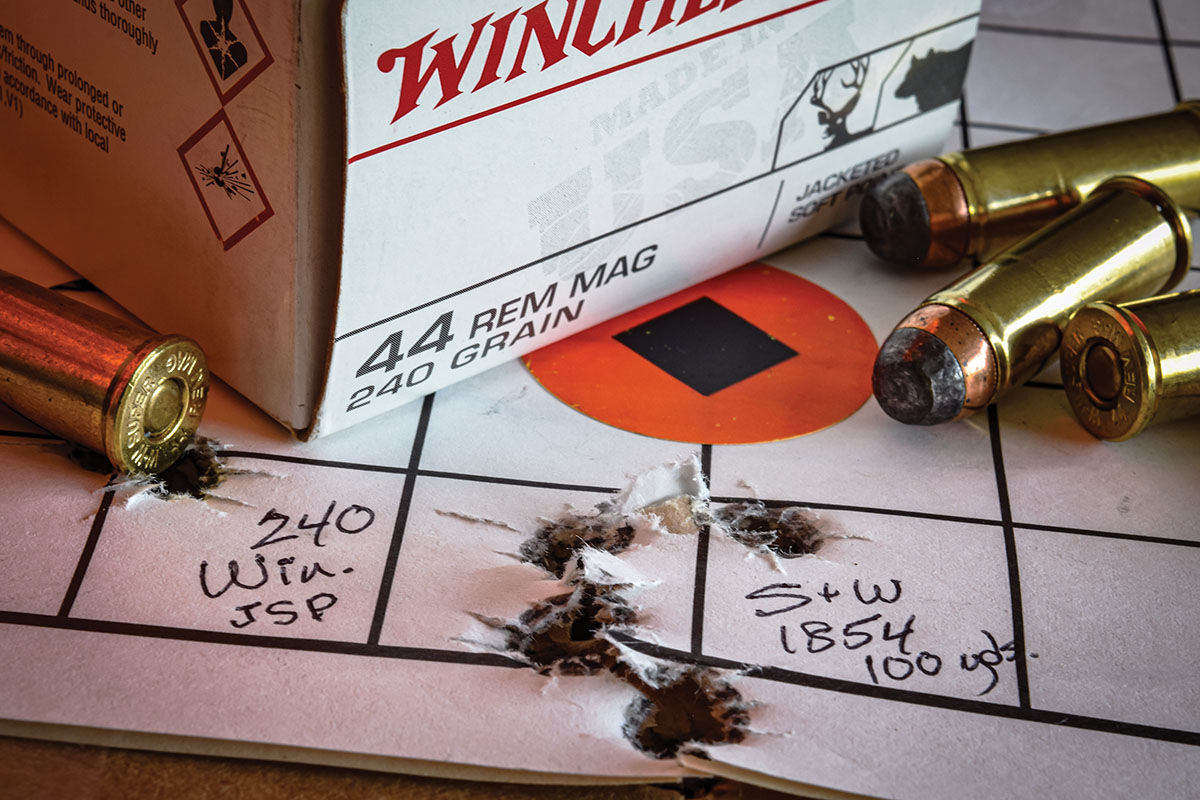
The lever, like the bolt, hammer and trigger, wears an Armonite coating “for added durability.”
The trigger has a straight, smooth face. I like its feel better than its profile. The trigger mechanism has long, loose take-up, a pleasant break. I guessed the pull weight of the first 1854 trigger I felt was about 4 pounds. The pull on the sample rifle sent for range trials registers a stiff 6 pounds on my Timney gauge. Dubuc said the specification is 3 to 6 pounds. There’s a cross-bolt safety; but I’ll be using the hammer’s half-cock notch. Unlike a safety that arrests the firing pin in bolt-actions, when “on,” a cross-
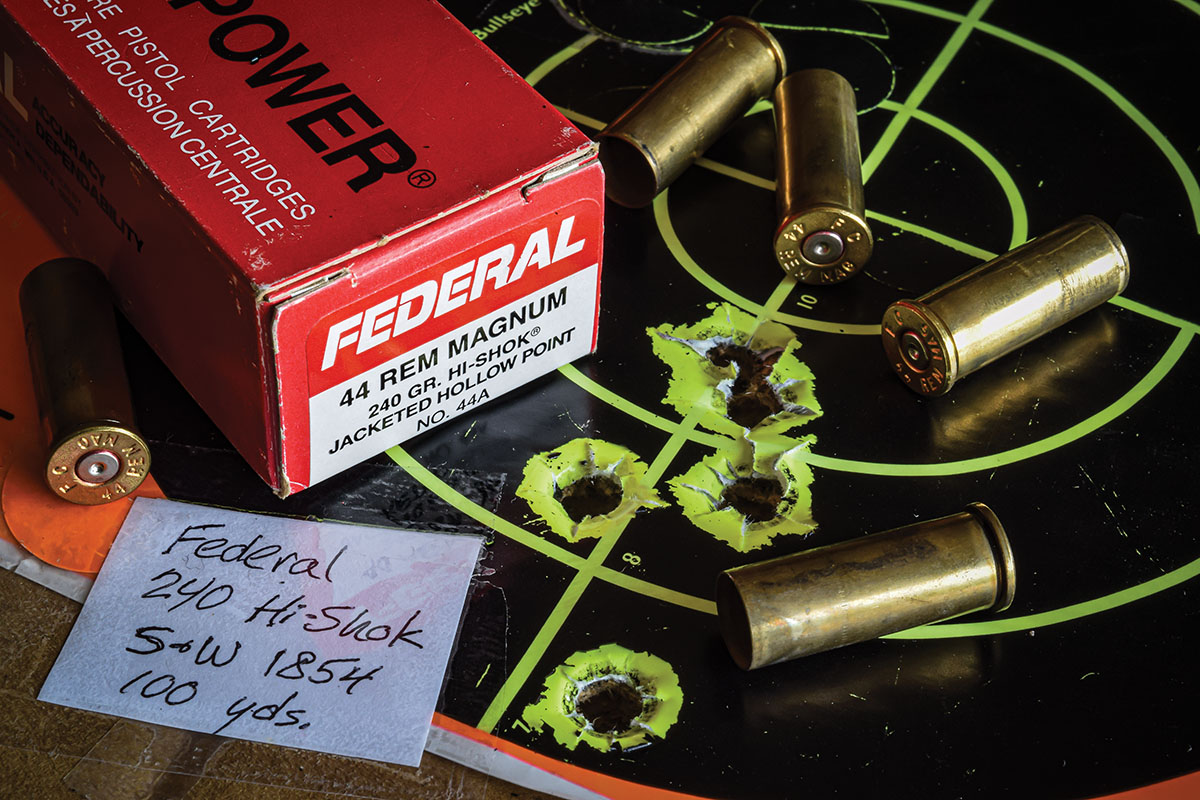
Each Model 1854 comes equipped with the XS sights that helped me tumble the hog in Tennessee woods. At the rear of a 4¾-inch rail, the ghost ring aperture affords a movie-screen field, complementing a big flat-faced gold bead for quick shots in cover. S&W provides no means for mounting an open sight or optics on the barrel or for a tang sight. “The 1854’s receiver has the same hole pattern as the Marlin 1894,” Vince Perreault told me. “But our front sight is higher than the Marlin’s. If you switch out the rear sight (say, to a Skinner), a front sight change may also be needed.
At this writing, S&W has committed to two special walnut-stocked editions of the 1854. Perreault explained that “one hundred top-grade rifles will be paired with S&W Model 29 44 Magnum revolvers in cased sets.” Another 1,854 limited edition rifles with glossy finish and upgraded wood are slated to sell through ordinary retail channels.
The S&W Model 1854 synthetic-stocked carbine lists at $1,279. Currently, the only other version for sale is the limited edition. At 7 pounds, it’s a few ounces heavier, but at $3,849, its a lot more expensive!
On The Range
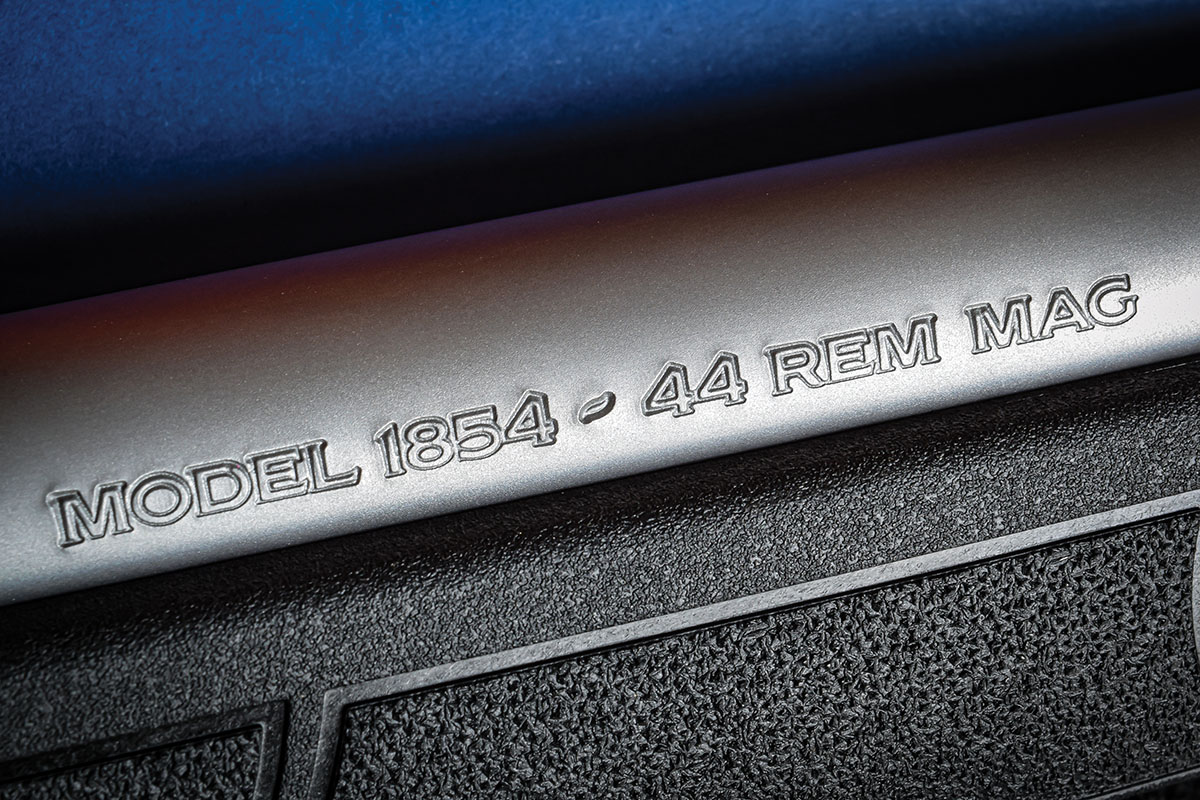
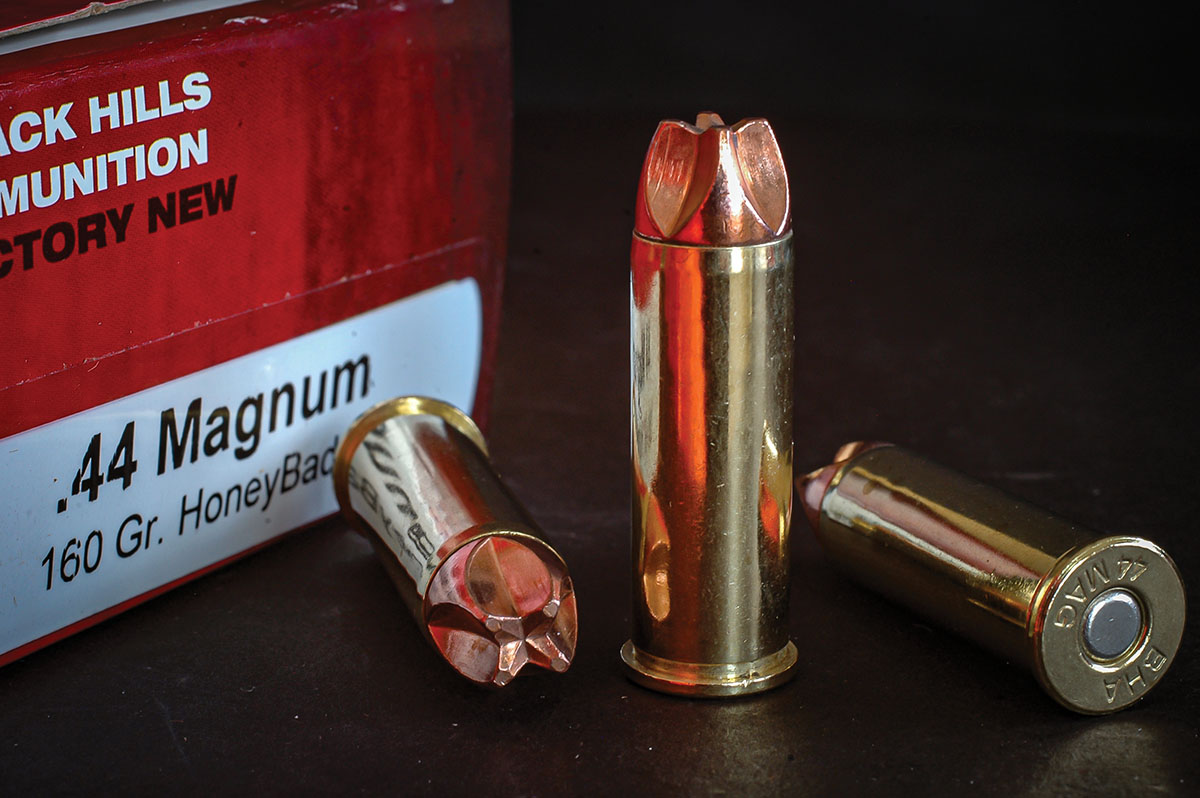
I was surprised at the big velocity spreads. But they didn’t correlate with accuracy. Winchester’s JSPs showed a 99-fps spread in velocities but turned in the tightest groups. The accuracy measures were a bit disappointing – though in my youth a 30-30 that shot into 3 inches at 100 yards was judged a “pretty good deer rifle.” While the 44 Magnum carries deer-killing punch beyond 100 steps, snug groups aren’t its forte. Also, the sample 1854 had a trigger on the heavy end of the specification range. I had to work hard to keep this slim 6¾-pound carbine steady on sandbags while muscling its 6-pound trigger. My apologies to loads (like Hornady’s FTX) that have performed superbly for me in less challenging rifles.
My friend, Sam Shaw, took his turn with the carbine. A lever-action buff, he competes in Cowboy Metallic Silhouette matches. Overall, we got similar results. But group size and placement often differed with a given load – a reminder that with lightweight carbines especially, shooter position, grip and firing routine affect the point of impact.
Notably, the broad range of bullet weights (160 to 300 grains) and velocities (1,300 to 2,200 fps) did not show up in vertical dispersion on targets. As a guess, fast bullets left early in barrel lift; slow bullets lagged just enough to gain the elevation on exit to compensate for its greater rate of drop at 100 yards. In short handguns, that lag can put slow, heavy bullets higher on target than faster missiles. Bullets from modern bottleneck rifle cartridges are very quick, and muzzle flip from ordinary bolt rifles controlled to a large extent by the rifle’s stock, so velocity and ballistic coefficient rule. With the 1854, barrel lift and bullet trajectory seemed to “cancel each other” at 100 yards.
Yes, I like this rifle. It feels good, points naturally, cycles smoothly and reliably. Three loads – Federal’s 240-grain JHP, Winchester’s 240 JSP and Black Hills’ 300-grain JHP – have shot inside 1½ inches. More shooting would sift out the most consistent of these and other loads. For hunting, the 160-grain HoneyBadger trumps early loads for the 30-30, with a bullet that drives very deep. Federal’s 270-grain HammerDown load at 1,680 fps and its fearsome 300-grain CastCore at 1,500 fps should stop heavy beasts. Worthy loads with middle weight 225- to 250-grain bullets abound.
Alas, I’m still looking for a load to match the 1956 retail of $7.25 per box of 50!
